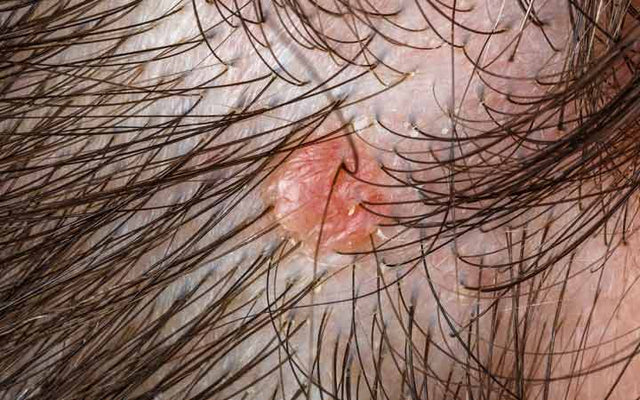Pimples, those common skin nuisances, can show up in unexpected places, including your scalp. Scalp pimples can be itchy, uncomfortable, and sometimes even painful. In this post, we’ll dive into the causes of pimples on the scalp, effective treatment options, and tips for prevention, so you can bid farewell to those pesky bumps.

1. Understanding Scalp Pimples
Scalp pimples are much like facial or body pimples but occur on the scalp. They can range from small, painless bumps to larger, more inflamed ones. These pimples can be caused by various factors, including clogged hair follicles, excess oil production, and bacterial infection.
2. Common Causes
- Excess Oil: Overproduction of sebum (the skin’s natural oil) can clog hair follicles and lead to pimples.
- Hair Products: The use of heavy or greasy hair products, like pomades or gels, can contribute to scalp pimples.
- Sweat and Heat: Sweating, especially in hot and humid weather, can create an ideal environment for pimple-causing bacteria to thrive.
- Poor Hygiene: Inadequate hair washing and scalp care can allow oil, dirt, and dead skin cells to accumulate, leading to pimples.
3. Treatment Options
Treating scalp pimples can help alleviate discomfort and prevent them from worsening:
- Shampoo Regularly: Use a mild, sulfate-free shampoo to cleanse your scalp regularly. Pay attention to massaging the scalp to remove excess oil and buildup.
- Topical Treatments: Over-the-counter products containing ingredients like salicylic acid or benzoyl peroxide can help clear scalp pimples. Apply them directly to the affected areas.
- Tea Tree Oil: This natural oil has antibacterial properties and can be applied to pimples after dilution.
- Prescription Medications: For severe cases, a dermatologist may recommend prescription-strength treatments, such as topical or oral antibiotics.
4. Prevention Tips
Preventing scalp pimples involves maintaining good scalp hygiene and adopting healthy habits:
- Use Appropriate Hair Products: Choose hair products that are suitable for your hair type and avoid heavy, greasy products that can clog pores.
- Shower After Sweating: Rinse your scalp after sweating, especially after workouts or hot weather.
- Avoid Tight Hairstyles: Hairstyles that pull on the hair can create friction on the scalp, potentially leading to pimples.
- Regular Hairbrush Cleaning: Clean your hairbrush regularly to prevent the buildup of oil and dirt that can transfer to your scalp.
Conclusion: A Clear-Cut Solution
Scalp pimples can be a discomforting issue, but with the right care, they can be managed effectively. Whether you’re dealing with occasional scalp pimples or facing a recurring problem, a consistent hair care routine, proper hygiene, and targeted treatments can help you achieve a healthy, clear scalp. If you’re concerned about persistent scalp pimples, consulting a dermatologist can provide personalized guidance and solutions. Say goodbye to scalp troubles and hello to a confident, healthy head of hair!